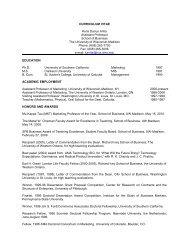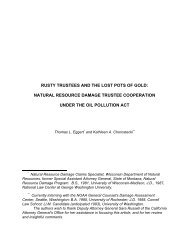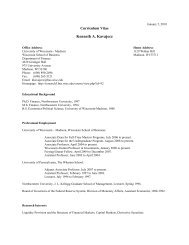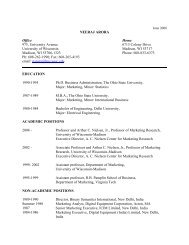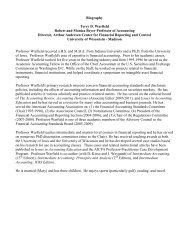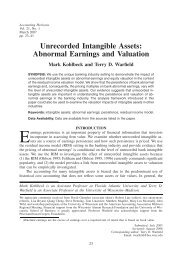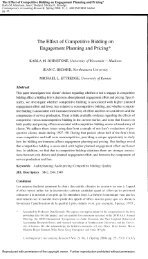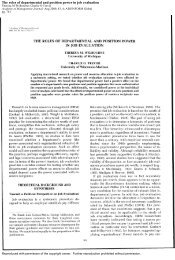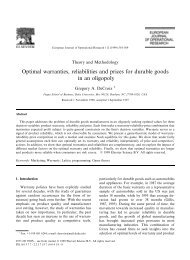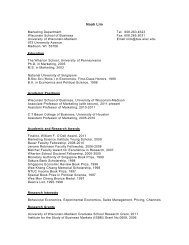family legacies - Wisconsin School of Business - University of ...
family legacies - Wisconsin School of Business - University of ...
family legacies - Wisconsin School of Business - University of ...
Create successful ePaper yourself
Turn your PDF publications into a flip-book with our unique Google optimized e-Paper software.
Family Legacies<br />
2003, p. 220). In this study, we asked participants “to tell a story that you remember being told<br />
by a <strong>family</strong> member that reflects or characterizes your <strong>family</strong>.” Due to the importance <strong>of</strong> context<br />
in the storytelling process, participants were also asked who tells the story and when the story is<br />
told (cf. Bylund, 2003; Martin, Hagestad, & Diedrick, 1988). Next, we explained the notion <strong>of</strong><br />
<strong>family</strong> legacy and encouraged participants to list as many <strong>family</strong> <strong>legacies</strong> as they could think <strong>of</strong>,<br />
both positive and/or negative. After participants listed their <strong>family</strong> <strong>legacies</strong>, we asked them to tell<br />
stories which helped to illustrate each legacy on their list. Finally, in order to discover how third<br />
generation <strong>family</strong> members sustain or modify their <strong>family</strong> <strong>legacies</strong>, we asked how participants<br />
tell stories which illustrated how they have embraced, rejected, and extended their <strong>legacies</strong>.<br />
Data analysis<br />
Following the interviews, the audio-tapes were transcribed furnishing 144 single-spaced<br />
pages <strong>of</strong> data. We used analytic induction (Bulmer, 1979; Riessman, 1993) to analyze the<br />
content <strong>of</strong> <strong>family</strong> <strong>legacies</strong> and stories for themes; we followed the same procedure for analyzing<br />
narratives about the ways in which the <strong>legacies</strong> were embraced, rejected, and/or extended (see<br />
also Koenig Kellas & Trees, 2006 for a similar method). We first separately read the transcripts<br />
in their entirety to create a general sense <strong>of</strong> the data. In the initial stories, we focused on the<br />
storytelling process by analyzing which <strong>family</strong> member typically told the story and when the<br />
story is told. We also analyzed the specific situation and context <strong>of</strong> the storytelling during the<br />
interviews themselves, to emphasize the importance <strong>of</strong> context and culture in our analysis. This<br />
helped us to better address under what conditions the storytelling process occurred. We also<br />
analyzed the data to identify patterns among both positive and negative <strong>legacies</strong>. After individual<br />
assessment <strong>of</strong> the data in which we noted emergent themes, we met to compare our analyses and<br />
collapse and categorize responses into recurring patterns according to the individual research<br />
13



